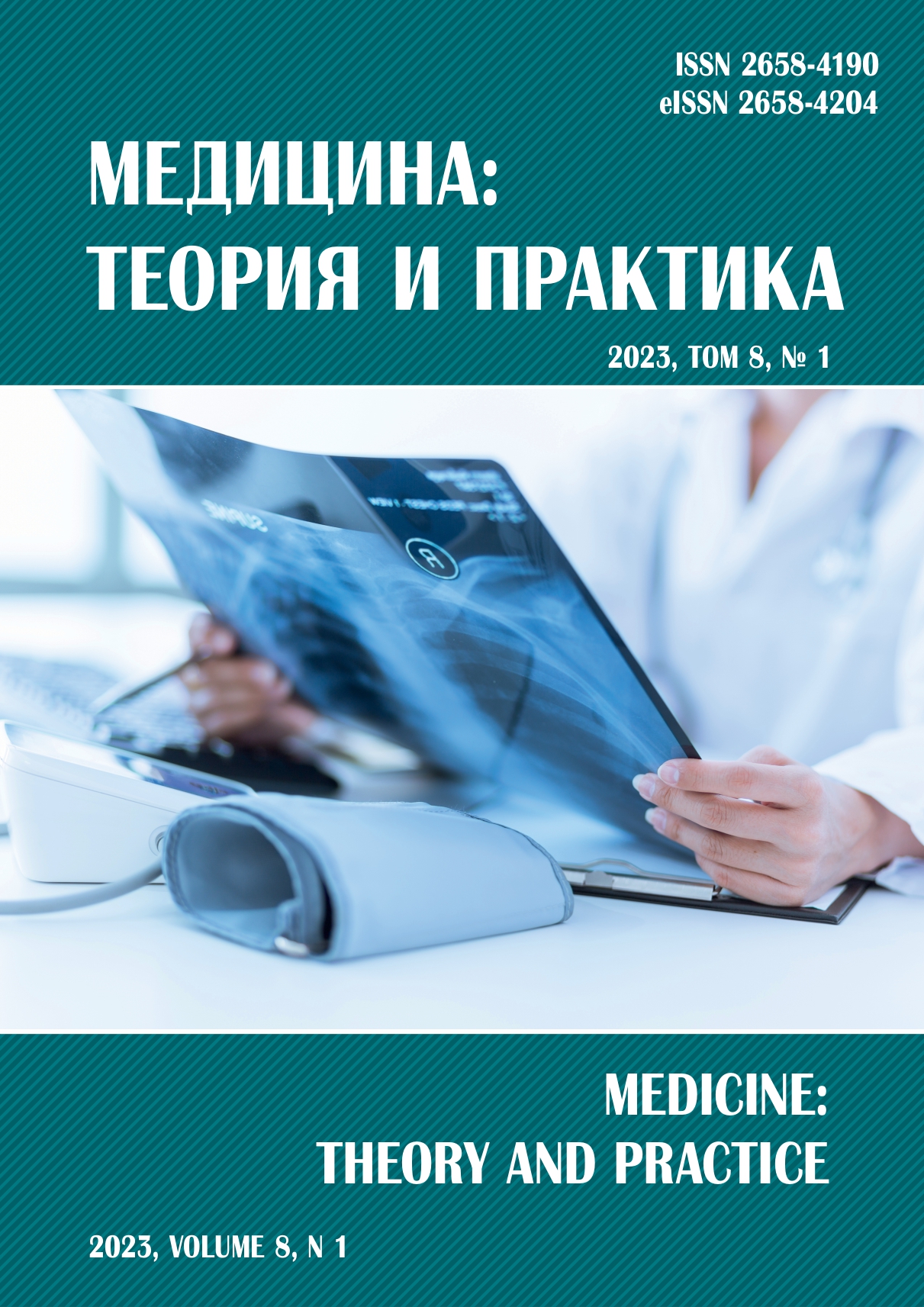TRANSCRANIAL DIRECT CURRENT STIMULATION IN THE CORRECTION OF COGNITIVE IMPAIRMENT IN PRESCHOOL PATIENTS
Abstract
Cognitive impairment in children is one of the most relevant and frequent problems of pediatric neurology, leading to learning difficulties, behavioral problems and social maladaptation.
Transcranial Direct Current Stimulation (tDCS) is one of the most promising physiotherapeutic methods for treating cognitive impairment in adult and pediatric patients. Objective — to evaluate
the effectiveness of tDCS in the correction of cognitive impairment in patients of preschool age. The study included 21 patients with cognitive impairment, including 19 boys and 2 girls. All patients underwent tDCS with a course of 10 procedures using a direct electric current with a voltage of 0.4 μA with the application of electrodes on the subdominant hemisphere in the frontal (leads Fp1 or Fp2) and parietal (leads P3 or P4) areas. All patients were evaluated according to the Wexler scale, Raven matrices and the scale “Feeling, Activity, Mood” (FAM) at the initial level and after 10 procedures. Results. The average values of the Wexler test at the initial level were 77 ± 4 points. After second examination, the average score was 82 ± 5 (p < 0.01). When assessed by Raven matrices, the average score was 12 ± 2 points. When second examination, the average values were 13 ± 2 points (p < 0.01). When assessed according to the FAM scale, the average score in the “Feeling” section was 42.3 ± 5 points at the initial level and 45.8 ± 5 when assessed in dynamics (p < 0.01), in the “Activity” section — 37.3 ± 4 points at the beginning of the study and 41.1 ± 4 points for second examination (p < 0.01), in the “Mood” section — 42.6 ± 3 points at baseline and 43.6 ± 3 points for dynamic examination. Thus, the use of tDCS in children with impaired cognitive function can improve the cognitive status of patients, increase their overall well-being and activity.
References
Абабков В.А., Авакян Г.Н., Авдюнина И.А. и др. Неврология. Национальное руководство. Том 1. М.: ГЭОТАР-Медиа; 2018.
Вансович Л.И. Применение некоторых физиотерапевтических методов лечения в терапии. Вестник Казахского Национального медицинского университета. 2013; 1: 180–1.
Киспаева Т.Т. Физиотерапевтическая коррекция когнитивных нарушений в клинике нервных болезней. Медицина и экология. 2009; 52(3): 9–14.
Князева О.В., Белоусова М.В., Прусаков В.Ф., Зайкова Ф.Н. Применение транскраниальной микрополяризации в комплексной реабилитации детей с расстройством экспрессивной речи. Вестник современной клинической медицины. 2019; 12: 64–9.
Ковалева О.А., Венцова А.Г., Лигунова Д.М. и др. Сравнительный анализ данных транскраниальной допплерографии сосудов головного мозга при применении транскраниальной микрополяризации у детей с когнитивными расстройствами. Альманах современной науки и образования. 2017; 6: 54–7.
Лебедев В.П. Общие вопросы и основные механизмы эффектов транскраниальной электростимуляции. В сб.: Лечебные эффекты центральных и периферических электровоздействий. СПб.; 2001: 5–7.
Соколов С.В., Заболотский Д.В. Когнитивные дисфункции у ортопедических больных. Russian Biomedical Research. 2020; 5(2): 49–51.
Чутко Л.С., Пальчик А.Б., Кропотов Ю.Д. Синдром нарушения внимания с гиперактивностью у детей и подростков. Санкт-Петербург: Российская медицинская академия последипломного образования Министерства здравоохранения Российской Федерации. 2004.
Шелякин А.М., Преображенская О.В., Богданов И.Г. Клиническая эффективность и физиологический анализ микрополяризации мозга. Сб: Актуальные вопросы физиотерапии и курортологии. СПб.; 2003: 68–9.
Ageranioti-Bélanger S., Brunet S., D’Anjou G. et al. Behaviour disorders in children with an intellectual disability. Paediatr Child Health. 2012; 17(2): 84–8. DOI: 10.1093/pch/17.2.84.
Bennabi D., Haffen E. Transcranial Direct Current Stimulation (tDCS): A Promising Treatment for Major Depressive Disorder? Brain Sci. 2018; 8(5): 81. DOI: 10.3390/brainsci8050081.
Bullard L.M., Browning E.S., Clark V.P. et al. Transcranial Direct Current Stimulation’s Effect on Novice Versus Experienced Learning. Exp Brain Res. 2011; 213(1): 9–14. DOI: 10.1007/s00221-011-2764-2.
Cai M., Guo Z., Xing G. Transcranial Direct Current Stimulation Improves Cognitive Function in Mild to Moderate Alzheimer Disease: A Meta-Analysis. Alzheimer Dis Assoc Disord. 2019; 33(2): 170–8. DOI: 10.1097/WAD.0000000000000304.
Lu H., Chan S., Chan W. et al. Randomized Controlled Trial of TDCS on Cognition in 201 Seniors With Mild Neurocognitive Disorder. nn Clin Transl Neurol. 2019; 6(10): 1938–48. DOI: 10.1002/acn3.50823.
Marrus N., Hall L. Intellectual Disability and Language Disorder. Child Adolesc Psychiatr Clin N Am. 2017; 26(3): 539–54. DOI: 10.1016/j.chc.2017.03.001.
Martin D.M., Liu R., Alonzo A. et al. Use of Transcranial Direct Current Stimulation (tDCS) to Enhance Cognitive Training: Effect of Timing of Stimulation. Exp Brain Res. 2014; 232(10): 3345–51. DOI: 10.1007/s00221-014-4022-x.
Ogundele M.O. Behavioural and emotional disorders in childhood: A brief overview for paediatricians. World J Clin Pediatr. 2018; 7(1): 9–26. Published 2018 Feb 8. DOI: 10.5409/wjcp.v7.i1.9.
Reinhart R.M., Cosman J.D. Using Transcranial Direct-Current Stimulation (tDCS) to Understand Cognitive Processing. Atten Percept Psychophys. 2017; 79(1): 3–23. DOI: 10.3758/s13414-016-1224-2.
Stagg C.J., Antal A., Nitsche M.A. Physiology of Transcranial Direct Current Stimulation. J ECT. 2018; 34(3): 144–52. DOI: 10.1097/YCT.0000000000000510.
Thair H., Holloway A.L., Newport R. Transcranial Direct Current Stimulation (tDCS): A Beginner’s Guide for Design and Implementation. Front Neurosci. 2017; 11: 641. DOI: 10.3389/fnins.2017.00641.



